Chanukah Gelt
| December 20, 2022A sampling of how various Jewish institutions creatively wove Chanukah into their fundraising drives
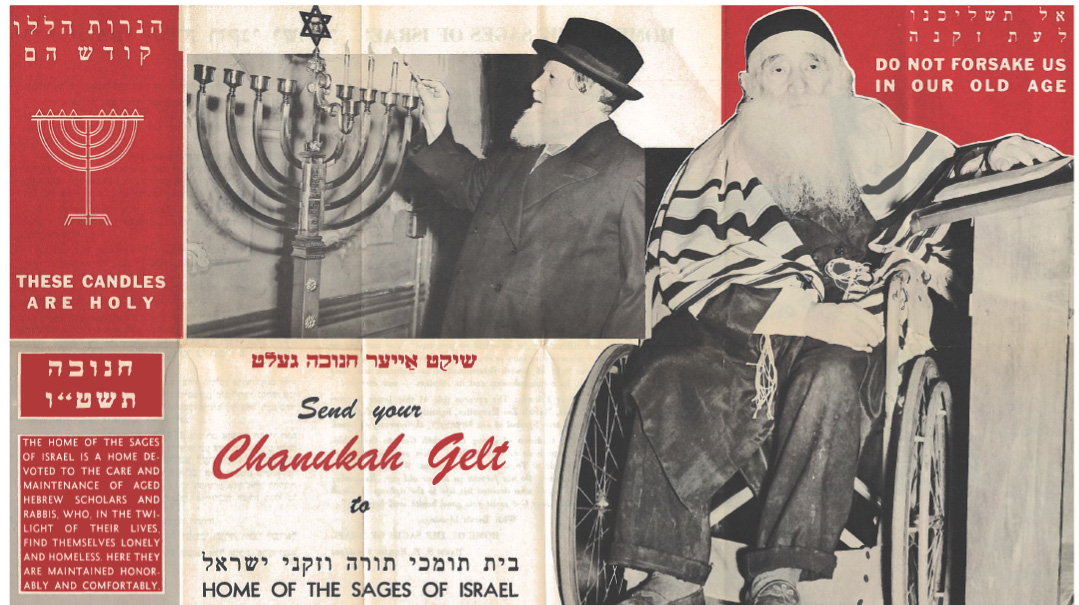
Title: Chanukah Gelt
Location: New York and beyond
Document: Assorted fliers
Time: 1950s and ’60s
Rich in metaphor and symbolism, the holiday of Chanukah has traditionally lent itself well to fundraising. With all its attendant discussion of spreading the light, making miracles, and of course Chanukah gelt, it would almost seem to have been created exclusively for this purpose.
Consequently, many institutions have embarked on campaigns during the Chanukah season, with hopes that the forthcoming donations would lead to a modern-day victory of the Chashmonaim and light over darkness. What follows is a sampling of how various Jewish institutions creatively wove Chanukah into their fundraising drives, using imagery, gimmicks, and prizes along the way.
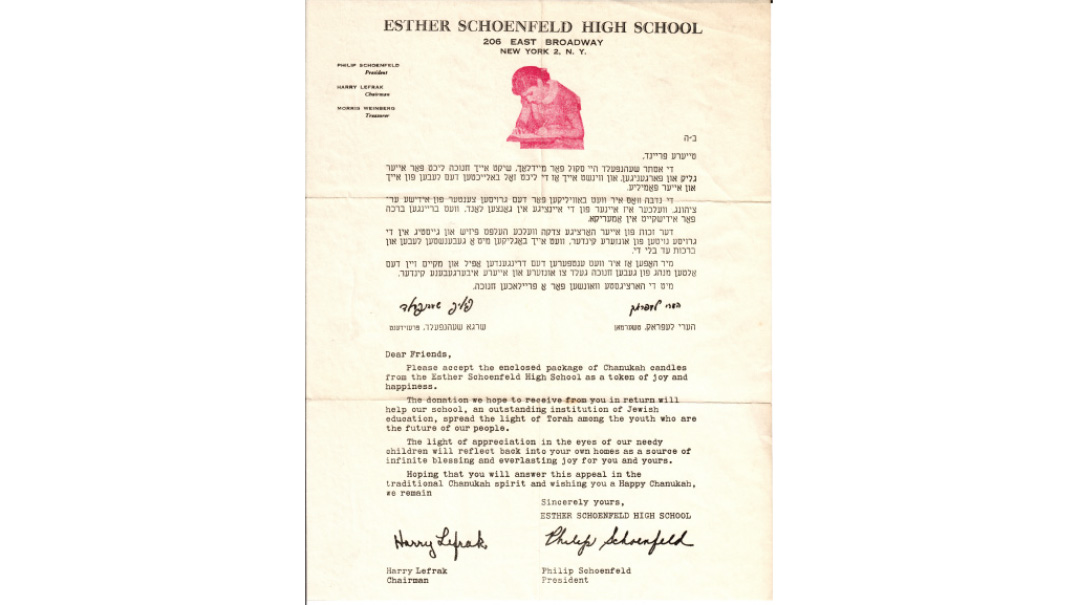
Esther Schoenfeld High School, 1952
One of the pioneering institutions of Orthodox girls’ education in the United States was the Esther Schoenfeld High School on the Lower East Side. It educated generations of girls — first in a dilapidated structure on East Broadway, then in more adequate accommodations on Broome Street.
The esteemed president at ESHS was Harry Lefrak, a philanthropist of that era who was seemingly involved in every important Orthodox cause. Both Beth Jacob of the Lower East Side and Bais Yaakov of 18th Avenue in Brooklyn are descended from ESHS, and were run for many years by Rav Yisroel Garber, a nephew of Rav Boruch Ber Leibowitz who survived the war years in Shanghai.
The 1952 appeal included a gift of Chanukah candles and promised that the donation would spread the “light of Torah among the youth” and the “light of appreciation in the eyes of our needy children.”
Home of the Sages of Israel, 1954
Founded in the 1930s, the Home of the Sages of Israel was a home for elderly Orthodox rabbis. Initially located at 268 East Broadway on the Lower East Side, they later expanded the facilities with the purchase of the building next door. They created their own photograph album of rabbis from the home and historic rabbis throughout Jewish history, made their own Haggadah, and sold calendars to raise money for the organization. Potential donors were asked to preserve the ancient tradition of giving Chanukah gelt to the rabbi of the home, Rabbi Naftali Zvi Margolies. In this way, the elderly scholars would not be forsaken in their old age.
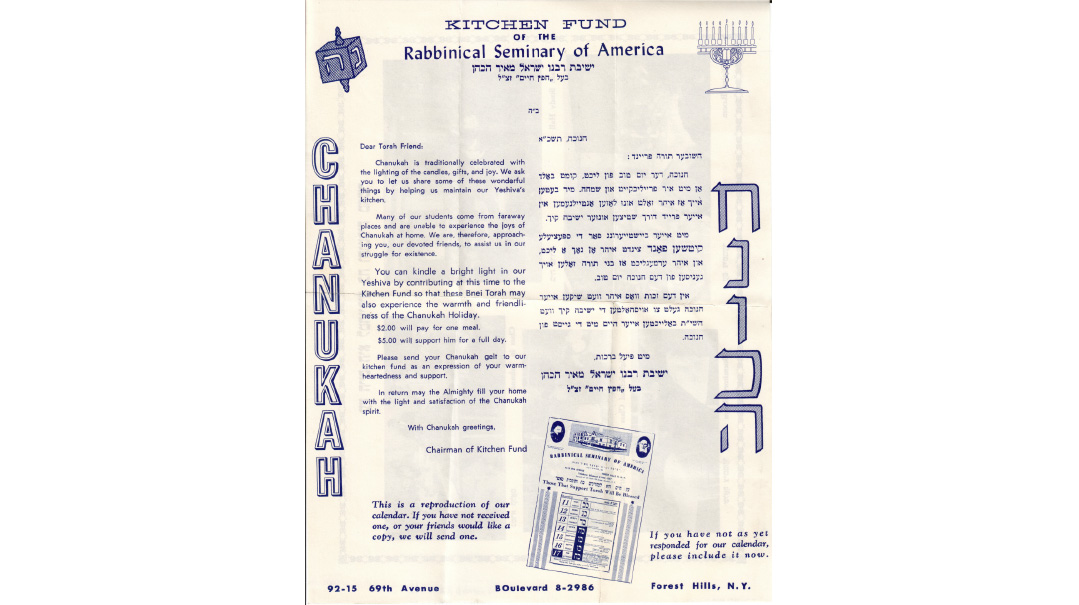
Rabbinical Seminary of America, 1960
Having moved to Forest Hills, Queens, from its original Williamsburg location just five years earlier, Yeshivas Rabbeinu Yisrael Meir HaKohen (Chofetz Chaim) was growing and expanding under the able leadership of its rosh yeshivah, Rav Henoch Leibowitz. Filling the role after the untimely passing of his father, Rav Dovid Leibowitz, at the end of 1941, Rav Henoch envisioned a yeshivah that would be the flagship of a movement.
One of the first yeshivos to have moved out to Queens, RSA established a Kitchen Fund to cater to the needs of its out-of-town students. The campaign asked for donations of Chanukah gelt to “kindle a bright light in our Yeshiva by contributing at this time to the Kitchen Fund.”
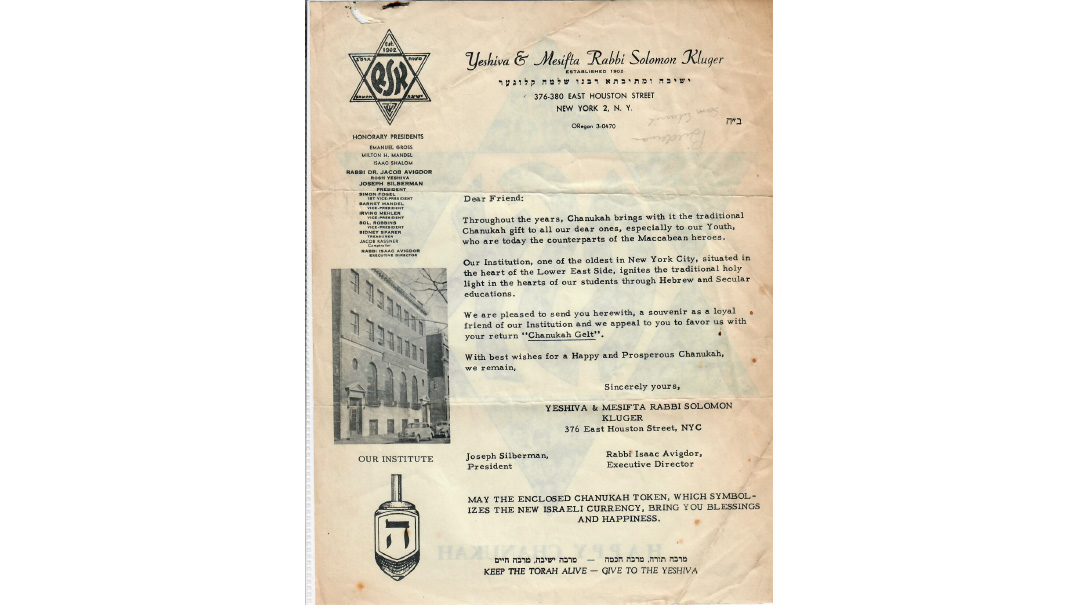
Yeshiva and Mesifta Rabbi Solomon Kluger
Founded in 1902 on the Lower East Side by primarily chassidic immigrants from Galicia, this yeshivah was named for the great Galician posek and rav of Brody, Rav Shlomo Kluger, one of the most influential halachic leaders of the 19th century. It emerged as one of the early full-time yeshivah day schools, with religious instruction in the morning and general subjects in the afternoon. It was also renowned for the then-uncommon practice of providing its students a sumptuous daily hot lunch — not something to be taken for granted during the Great Depression.
It eventually settled into its own premises on 376 Houston Street on the Lower East Side, and would evenutally merge with Yeshivah Chasan Sofer in the postwar era. In this fundraising circular, the yeshivah requested a donation of Chanukah gelt to provide “our Youth who are today the counterparts of the Maccabean heroes.” The appeal included a small gift — “the enclosed Chanukah token, which symbolizes the new Israeli currency.”
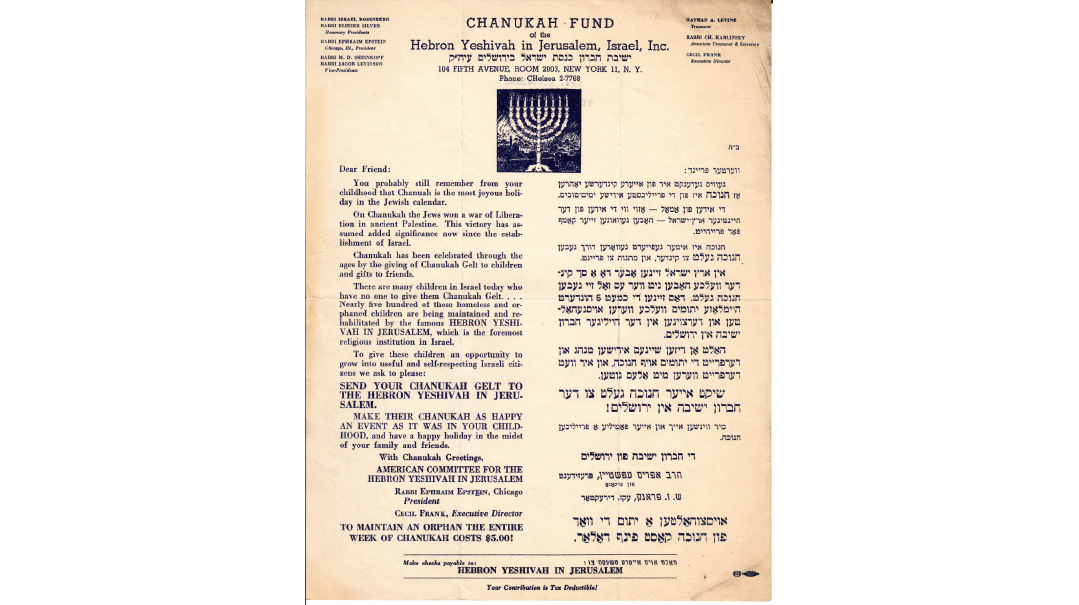
Chevron Yeshivah — Yerushalayim
When Slabodka rosh yeshivah Rav Moshe Mordechai Epstein moved a portion of his yeshivah from Slabodka to Chevron, his younger brother Rabbi Ephraim Epstein (1876–1960) assisted him in this endeavor. As a prominent rabbi in Chicago for a half a century, Rav Ephraim spearheaded many fundraising initiatives, but none was dearer to him than sustaining his brother’s yeshivah. It was also his own alma mater, and it was tragically where his beloved son Aharon Dovid had been studying in the summer of 1929 when he was killed during the Chevron massacre.
Long after Rav Moshe Mordechai’s passing, Rav Ephraim still served as the yeshivah’s president in the United States. This unique appeal for Chanukah gelt focused on the yeshivah’s having assumed responsibility for hundreds of orphaned children in the years following the war. The illustrious Chevron Yeshivah had now been transformed into a rehabilitative institute, as Torah and chesed were fused in the care for these unfortunate children.
The flier reminds its American audience, “On Chanukah the Jews won a war of Liberation in ancient Palestine. This victory has assumed added significance now since the establishment of Israel.” The goal is “to give these children an opportunity to grow into useful and self-respecting Israeli citizens.”
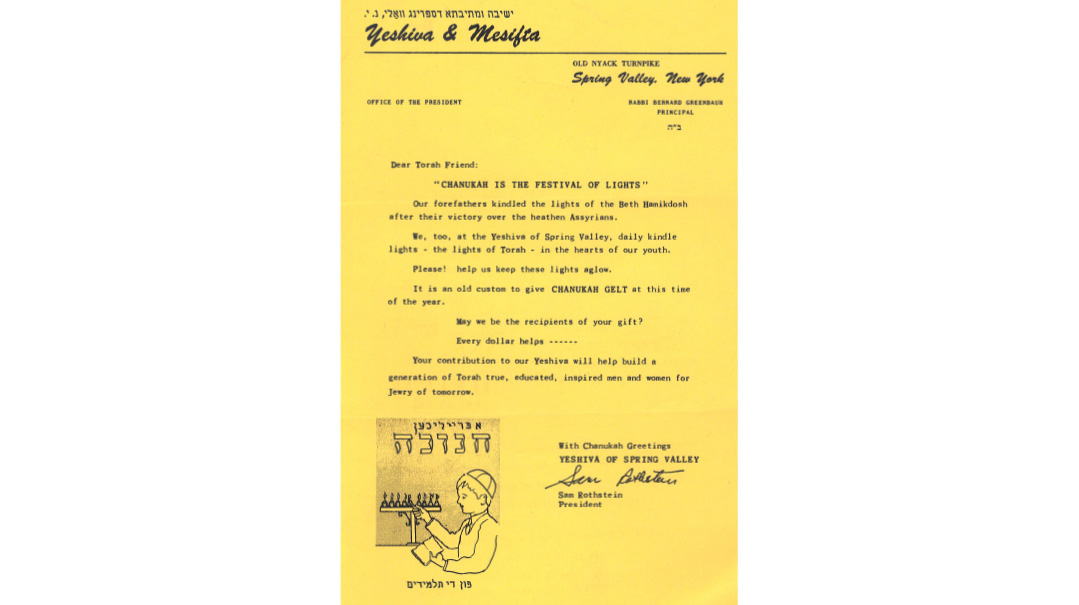
Yeshiva of Spring Valley
Established as one of the earliest day schools in the country, Yeshiva of Spring Valley opened its doors in 1943 in the basement of Rav Yosef Dov Soloveitchik’s shul with a handful of students. After several years in temporary locations, including the basement of Bais Medrash Elyon, it entered its own structure on the corner of Main Street and Maple Avenue, where it remained a centerpiece of the Monsey Torah community for more than a half a century before moving to its current location on College Road. A girls’ division of the school was soon added as well.
Like most of Monsey’s early Torah institutions, YSV was directly impacted by the great educational architect Rav Shraga Feivel Mendlowitz. His son-in-law Rabbi Dov Greenbaum served as its dean for decades. He used to go through the telephone book and dial the number of any family whose name sounded Jewish. He would ask them to join the school, and offer tuition breaks to those who needed it.
Making impressive use of Chanukah imagery, the appeal reminds recipients, “We too at the Yeshiva of Spring Valley daily kindle lights — the lights of Torah — in the hearts of our youth.”
Chanukah has provided many institutions down through the years a historical antecedent on which to base effective campaigns to keep the lights of Torah burning, at every stop in our long exile. Which creative use of Chanukah imagery, expressions, or metaphors moved you the most? Let us know.
(Originally featured in Mishpacha, Issue 941)
Oops! We could not locate your form.






